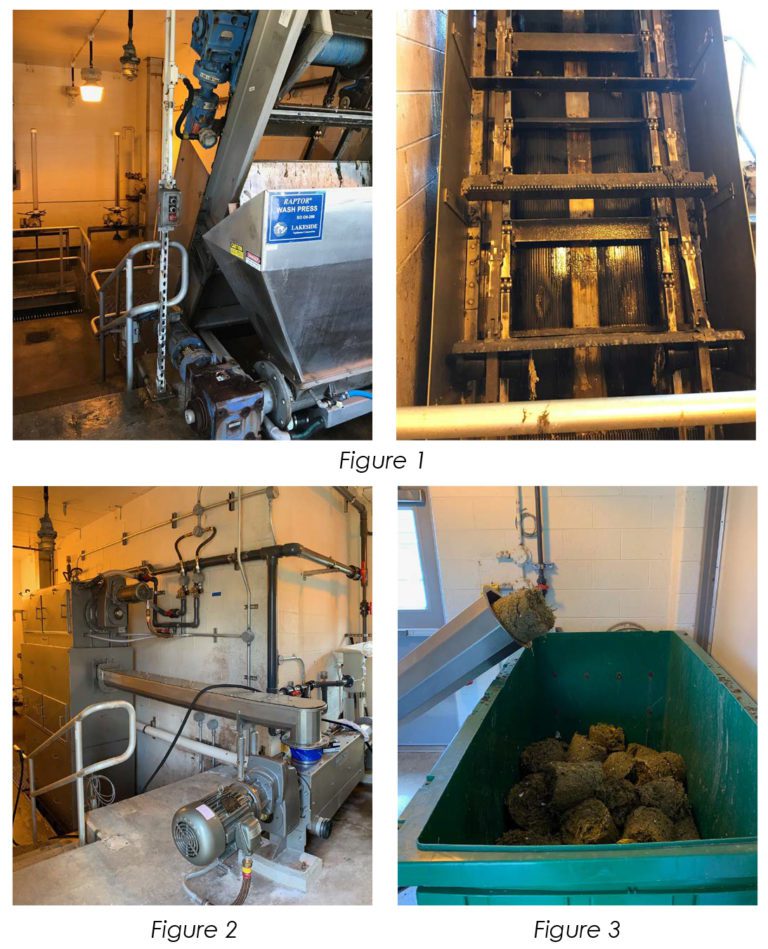SITUATION:
The city of Romeoville, Illinois, was struggling with outdated wastewater treatment equipment that was inefficient at removing solids, as well as difficult and time consuming to maintain. The existing 6mm catenary style screen system, installed in 2006, (Figure 1) required daily maintenance and cleaning, which took time and attention away from other responsibilities within the plant. In addition, too many solids were getting through the influent screens, putting a strain on other equipment and forcing operators to use pool nets to remove those solids from the primary clarifier every day.
Rags were also a constant problem for downstream processes, clogging pumps and settling in holding tanks. Again, operators were forced to pick the rags out by hand – another time consuming process. The costs of maintenance, repair and replacement were adding up, in money and time, requiring the city to look for a new solution.
SOLUTION:
In 2019, Romeoville replaced the existing screening equipment with Hydro-Dyne’s Great White Center Flow Screen with 6mm UHMWPE Perforated Plates and a Whitetip Shark Washing Compactor (Figure 2). The Great White Center Flow design promised a higher screening capture ratio with much lower operating and maintenance requirements.
Equipment: Great White Center Flow Screen
Whitetip Shark Washing Compactor
Location: Romeoville, IL
Date: 2019

The Hydro-Dyne perforated panels were drilled and custom engineered to allow for higher throughput capable of passing Romeoville’s peak wet weather flows and meeting their required head-loss and bypass water levels with no civil modifications.
Secondary access panels were also added at the lower deck for operators to evaluate the grid to ensure the wash water headers were offloading properly.
RESULTS:
Hydro-Dyne’s Great White has exceeded the city’s expectations:
“The Center Flow screen overall is performing nicely – it is easy to work with and maintain,” said the plant engineer for the city of Romeoville. “Everyone is happy and agrees it was the best decision.”
4750 118th Avenue North Clearwater, Florida 33762 USA Phone: +1 (813) 818-0777 Fax: (813) 818-0770
Copyright ©2025 Hydro-Dyne Engineering. All Rights Reserved. | Privacy Policy | Terms of Use